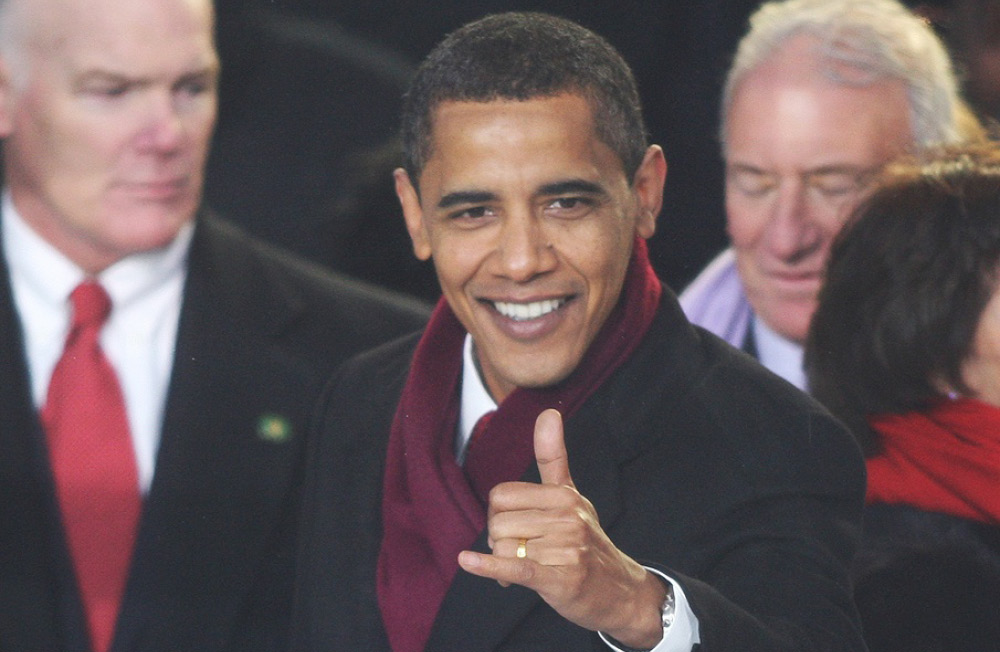The Short History Of Surfer Greetings
Share
For those of us in the southern states of the southern hemisphere, it’s flu season. So when you sit down with Nurse Ratchett and she jabs a horse needle in your quivering noodle-arm to ward off the lurgies, consider this: you’re far better off changing the way you shake hands, as the traditional male, corporate phallocentric paradigm-type handshake is in fact a 24-carat germ transmitter. You may as well hand the other party a cup of snot.
And there are alternatives to the standard version. You know there are, because we’ve all been caught out greeting a fellow surfer with one half of a polite bland-shake, only to have him or her set up a complex sequence of fist bump/shaka/lock-and-fly into junk-squeeze/finger-pistols to daps explosion. Such moments, known formally as Dap Greetings, can be socially awkward, especially when holding a beer or a small child. A little history might help.
The shaka, AKA the “hang loose”, is a simplified gesture designed to avoid the need for haoles to pronounce Pehea`oe. You do it by extending the thumb and little finger and tucking the middle three under, then positioning the whole arrangement over a bent elbow so that any nearby photographer will also capture your impressive bicep. The shaka emerged from Hawaiian custom in the ‘60s and has colonised the known world, being especially popular (I’m not making this up) with Brazilian exponents of Jiu Jitsu.
There are countless theories as to the birth of the shaka: maybe it was a hand measurement used by Polynesian navigators, who held it against the night sky to celestially guide their canoes. Or maybe it began with construction workers indicating beer o’clock by tipping the thumb-end of the shaka towards their mouths. The most persistent theory involves a great Hawaiian fisherman and tug-of-war champion named Hamana Kalili. An eel is said to have bitten off the middle fingers of Kalili’s right hand (or he lost them in a sugar mill accident, but that’s nowhere near as interesting) so that only the thumb and pinkie stood up when he raised his arm in church to conduct the choir. He was a Mormon, you see. The naming of the symbol as the “shaka” evolved in the ‘60s through its use as a sign-off by Honolulu TV celebrity Lippy Espinda.
The fist bump, by definition, involves contact. Mysophobes may wish to abstain. The gesture is centuries old and seems to originate from gloved sports: boxers and batsmen use it because they can’t get their fingers free. Glen Winton notwithstanding, surfing is not a gloved sport. When Barack and Michelle Obama fist-bumped during a televised presidential campaign speech in Minnesota, the gesture became known as “the fist bump heard ‘round the world”. A study conducted last year at Aberystwyth University in Wales (What? You’ve never studied there?) documented that fist bumps are twenty times more hygienic than handshakes, and ten times cleaner than high-fives.
Other hygienic variants include the yogic Namaste, which in the wrong hands can look as pretentious as prayer flags, and the old-school curtsy for the ladies, tip of the hat for gents. A note on hat-tipping: if you doff a beanie you‘ll look like you’re begging.
Next up, the double Euro kiss: it doesn’t pass the hygiene test, but when practised with skill, it can be desexualised, and can impart a rather thrilling Mafiosi frisson. Big Tony, I loved you like a brother.
It is possible for a combination of the above to escalate into a warm embrace known to the Latin world as an abrazo. You may receive one of these if you have conspicuously charged in heavy surf, rescued the initiator of the abrazo from some kind of peril or revealed the location of a secret barrelling left. If the abrazo itself escalates into any form of groin-centric contact, you’ve moved to frottage, and you’ll need a French person to disentangle you.
